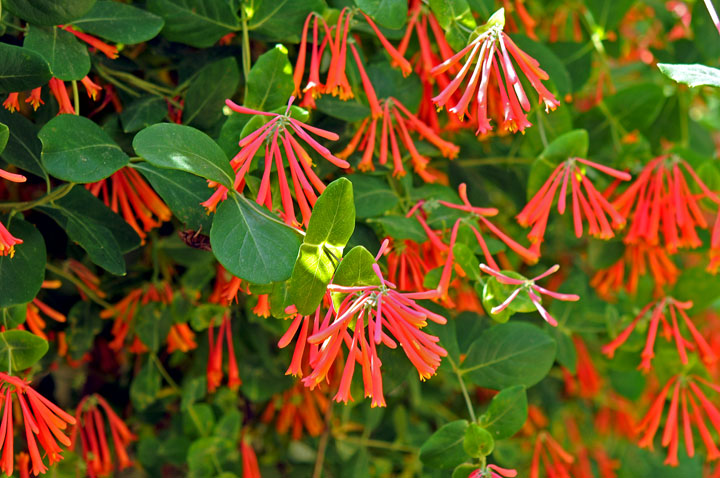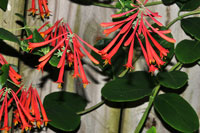
 |
Photos © Kim Hosen; Suburban Backyard, Woodbridge, VA; May 2011 & 2013 Text by Kristen Hughes |
Trumpet Honeysuckle Lonicera sempervirens, more commonly known as Trumpet Honeysuckle, is an ornamental climbing semi-evergreen found in the eastern, Midwestern and southern regions of the United States. This twining vine has oblong shaped leaves and clusters of tubular, trumpet shaped flowers which bloom from March to June. In late summer, the vibrant red flowers give way to bright red berries. When in bloom, the flowers attract humming birds, bees (especially bumblebees) and butter flies. A variety of birds, such as Quail, Purple Finch, Hermit Thrush and American Robin, like to eat the Trumpet Honeysuckle's berries and nest in the thick cover that its vines and foliage create. Trumpet Honeysuckle ranges from 3 to 20 feet, making it great for growing over arbors and up trellises. It prefers full sun to part shade. Trumpet Honeysuckle does well in rich, moist soil but can tolerate other types of soil, with the exception of dry sands. The leaves of have been used to treat asthma when dried and smoked. Freshly chewed leaves can be used to treat bee stings. Also, a syrup made from boiling the leaves has been known to treat sore throats and coughs. |






